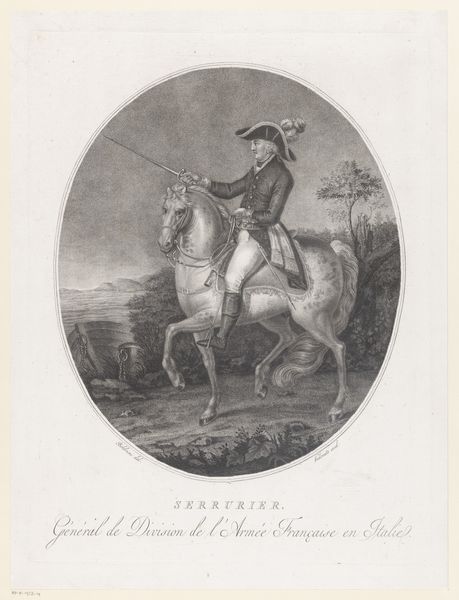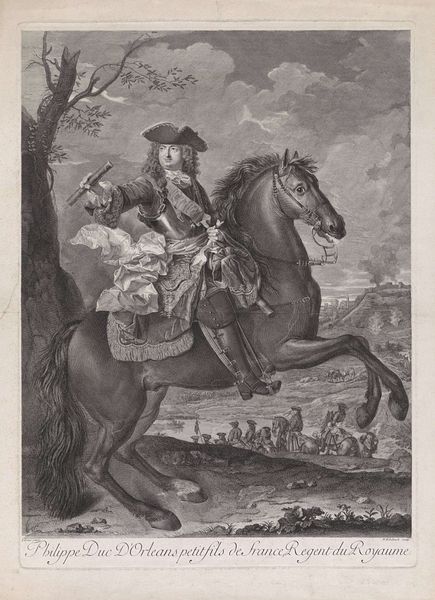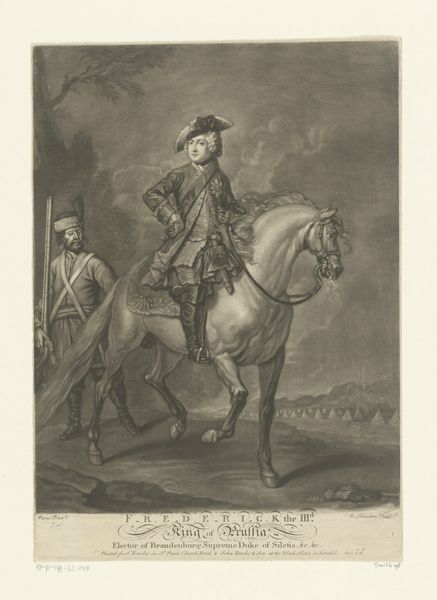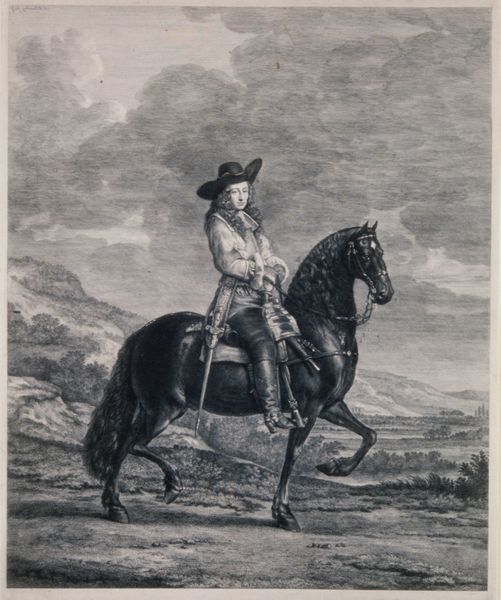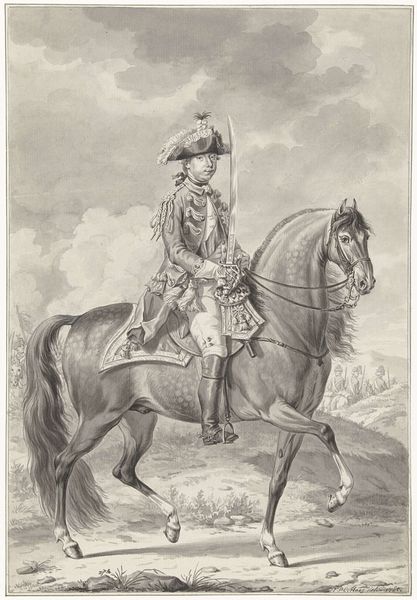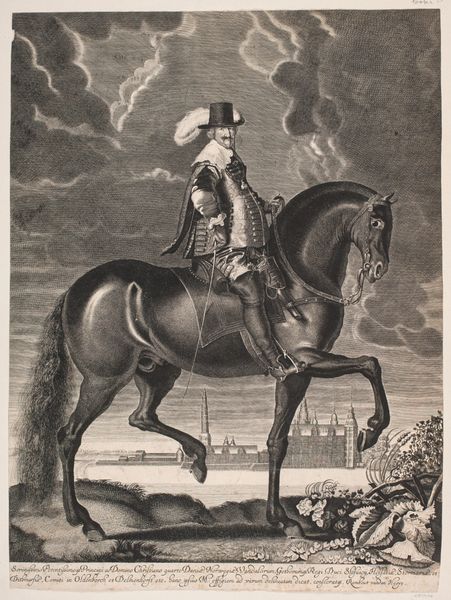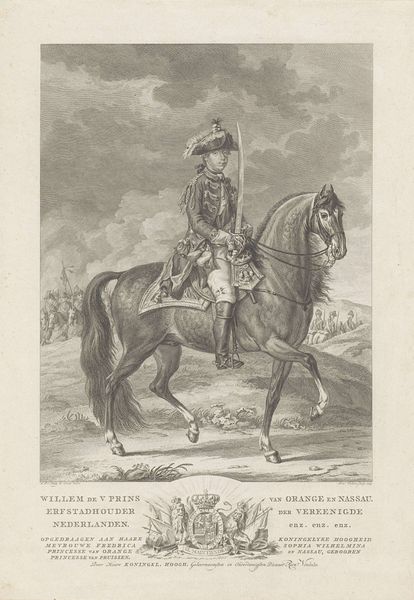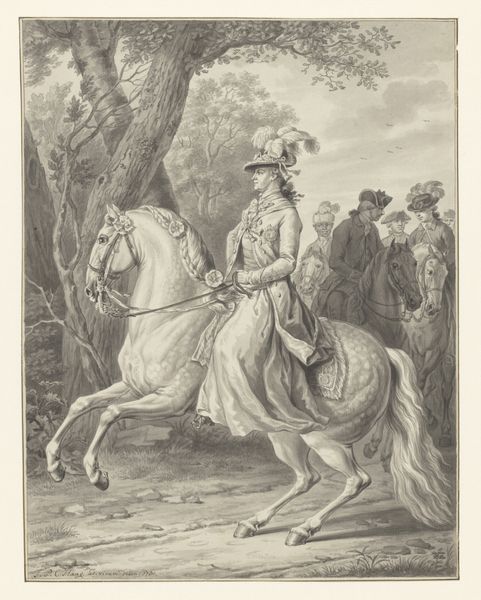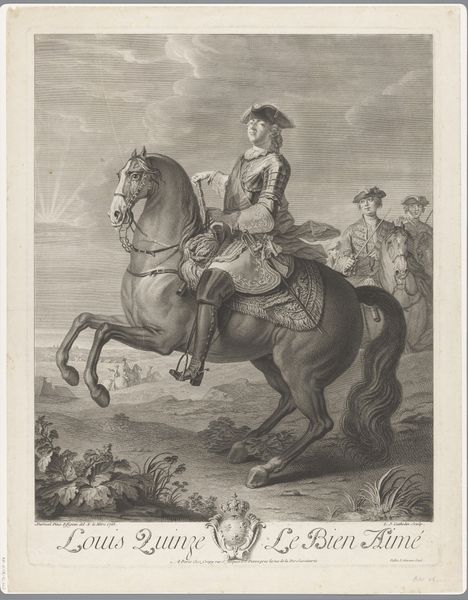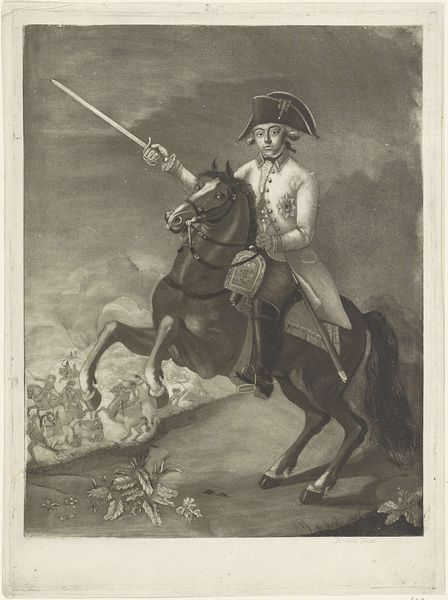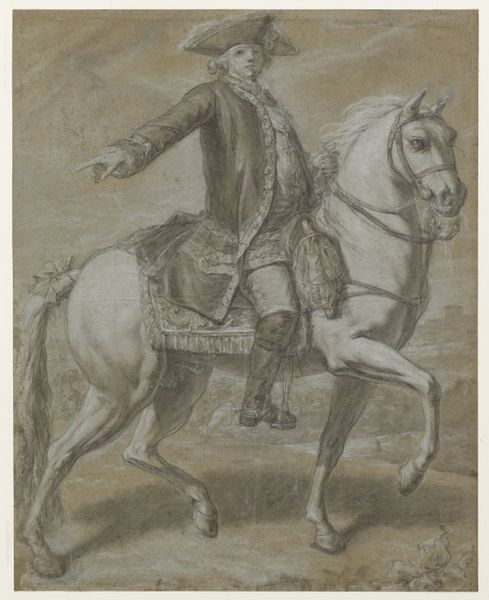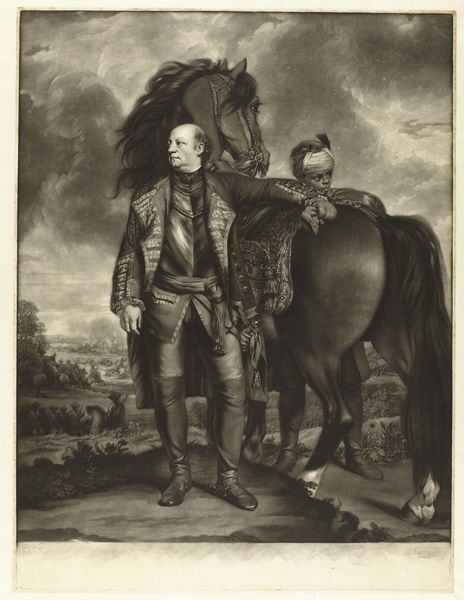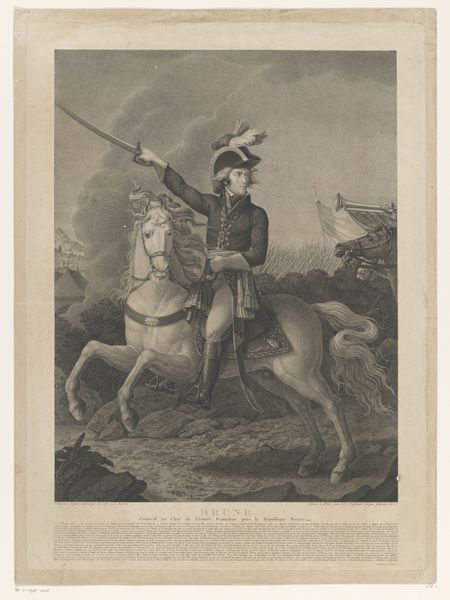
Ruiterportret van Louis XV, koning van Frankrijk en Navarra 1715 - 1755
0:00
0:00
michelaubert
Rijksmuseum
print, engraving
#
portrait
#
baroque
# print
#
old engraving style
#
landscape
#
horse
#
history-painting
#
academic-art
#
engraving
Dimensions: height 485 mm, width 320 mm
Copyright: Rijks Museum: Open Domain
Editor: Here we have a print, "Ruiterportret van Louis XV, koning van Frankrijk en Navarra" created sometime between 1715 and 1755, attributed to Michel Aubert. It looks like an engraving. I’m struck by how it uses seemingly simple lines to convey a grand, almost propagandistic image of the king. How would you interpret this work, looking beyond the obvious subject? Curator: I see here a clear demonstration of the mechanization of image-making and the propagation of power. An engraving, in its very essence, is a repeatable, reproducible object. Think about the labor involved – the engraver, likely working under direct commission, meticulously translating royal power into a readily distributable form. Consider the intended audience: were these prints for the aristocracy or a broader public? Editor: That’s fascinating. I hadn't really considered the role of the engraver. It's not just about depicting Louis XV, but about mass-producing and disseminating that image. Did the type of paper or ink used have any significance at the time? Curator: Absolutely. The quality of materials—paper, ink, and the engraving tools themselves—reflects the value placed on this representation. Were they using high-quality, imported paper to project an image of wealth, or were more economical materials used for wider distribution? The wear and tear on the printing plate itself, too, can tell a story of how many impressions were made. What happens when this type of representation becomes commonplace? Editor: So, you're suggesting that this seemingly straightforward portrait opens a window onto 18th-century production, labor, and even the monarchy’s efforts at self-promotion? Curator: Exactly. The print becomes more than just an image of Louis XV; it’s a tangible manifestation of the era’s economic and social forces. Editor: That really changes how I see the piece. It's not just a portrait, but a commodity with political and economic implications embedded in its very material. Curator: Indeed, and that’s what a materialist perspective can bring to art history. It pulls back the curtain to reveal the networks of production, consumption, and power that underpin even the seemingly simplest images.
Comments
No comments
Be the first to comment and join the conversation on the ultimate creative platform.
